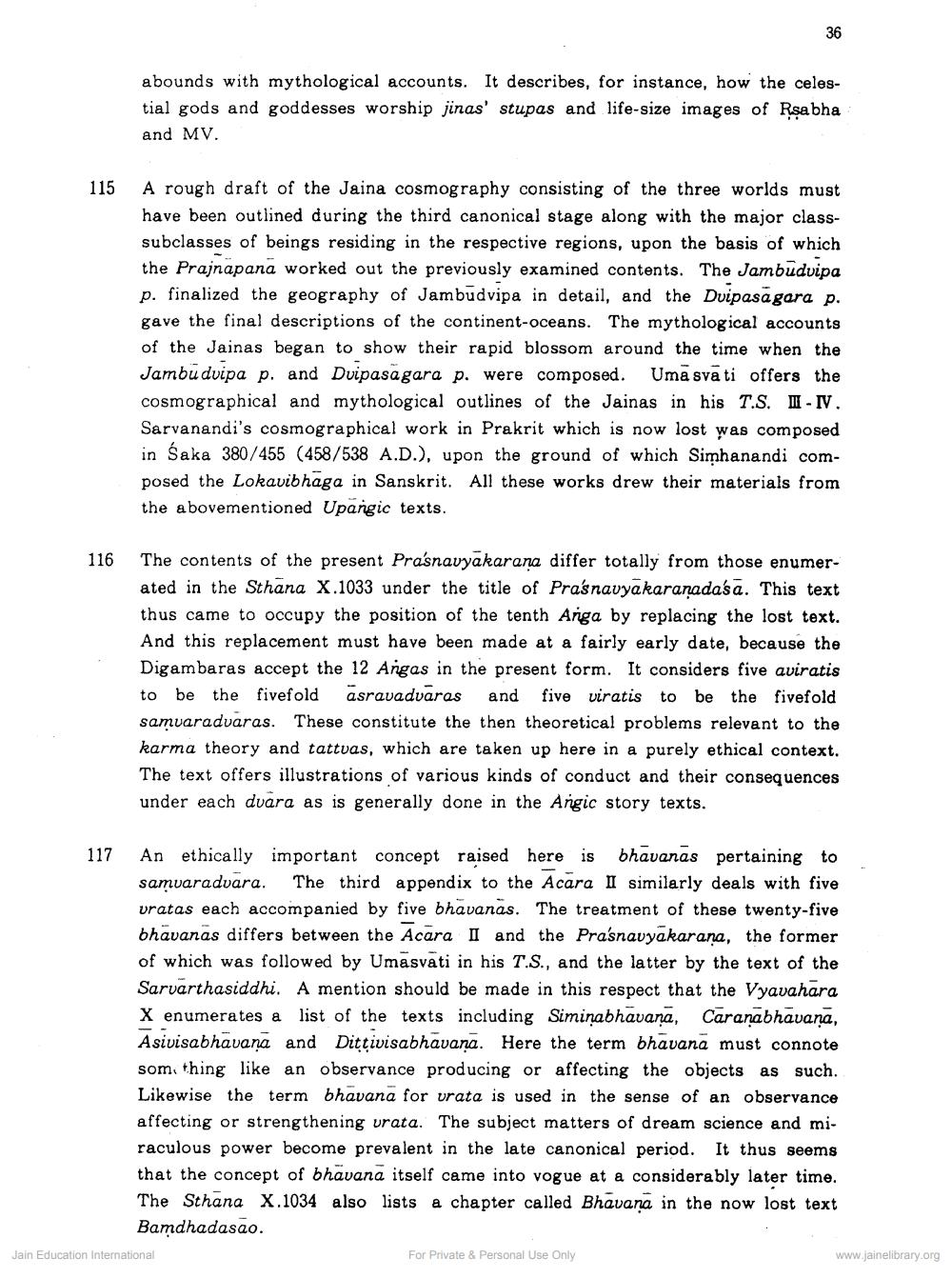________________
abounds with mythological accounts. It describes, for instance, how the celestial gods and goddesses worship jinas' stupas and life-size images of Rsabha and MV.
115
A rough draft of the Jaina cosmography consisting of the three worlds must have been outlined during the third canonical stage along with the major classsubclasses of beings residing in the respective regions, upon the basis of which the Prajnapana worked out the previously examined contents. The Jambudvipa p. finalized the geography of Jambudvipa in detail, and the Duipasāgora p. gave the final descriptions of the continent-oceans. The mythological accounts of the Jainas began to show their rapid blossom around the time when the Jambūdvipa p. and Dvipasagara p. were composed. Uma sva ti offers the cosmographical and mythological outlines of the Jainas in his T.S. II-IV. Sarvanandi's cosmographical work in Prakrit which is now lost was composed in Śaka 380/455 (458/538 A.D.), upon the ground of which Simhanandi composed the Lokavibhaga in Sanskrit. All these works drew their materials from the abovementioned Upangic texts.
116
The contents of the present Prasnavyakarana differ totally from those enumerated in the Sthana X.1033 under the title of Prasnavyakaranadasa. This text thus came to occupy the position of the tenth Anga by replacing the lost text. And this replacement must have been made at a fairly early date, because the Digambaras accept the 12 Angas in the present form. It considers five aviratis to be the fivefold asravadvaras and five viratis to be the fivefold samaradvaras. These constitute the then theoretical problems relevant to the karma theory and tattvas, which are taken up here in a purely ethical context. The text offers illustrations of various kinds of conduct and their consequences under each dvara as is generally done in the Angic story texts.
117 An ethically important concept raised here is bhavanas pertaining to
samvaradvara. The third appendix to the Acara I similarly deals with five vratas each accompanied by five bhavanas. The treatment of these twenty-five bhavanas differs between the Acara II and the Pra'snavyakarana, the former of which was followed by Umasvati in his T.S., and the latter by the text of the Sarvarthasiddhi. A mention should be made in this respect that the Vyavahara X enumerates a list of the texts including Simiņabhavana Caranabhavanā, Asivisabhavana and Dittivisabhavana. Here the term bhavanā must connote som, thing like an observance producing or affecting the objects as such. Likewise the term bhavana for vrata is used in the sense of an observance affecting or strengthening vrata. The subject matters of dream science and miraculous power become prevalent in the late canonical period. It thus seems that the concept of bhāvana itself came into vogue at a considerably later time. The Sthana X.1034 also lists a chapter called Bhavana in the now lost text
Bamdhadasao. Jain Education International For Private & Personal Use Only
www.jainelibrary.org




